You watched the total solar eclipse with wonder on August 21, 2017. Relive the memories with this collection of stories submitted by Sigma Xi members about how they watched this special event.
1. It Looks Like Game Day...for Science!
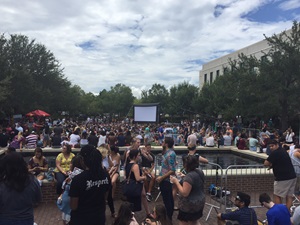 The College of Charleston in Charleston, South Carolina, threw an eclipse party for 1,500 students, faculty, and staff members, and the party served as the staging area for NASA TV's national total solar eclipse coverage.
The College of Charleston in Charleston, South Carolina, threw an eclipse party for 1,500 students, faculty, and staff members, and the party served as the staging area for NASA TV's national total solar eclipse coverage.
Astronomy faculty and students also took the event off campus to 16 locations including parks and retirement homes, and members of the South Carolina NASA Space Grant Consortium launched weather balloons to photograph both the Sun and the eclipse shadow.
The on-campus event venue had games, snacks, and educational outreach activities, and interest in the eclipse was very high. This excitement led College of Charleston Executive Vice President of Student Affairs Alicia Caudill to remark, "It looks like Game Day...for Science!!!"
Jon Hakkila,
Associate Dean of the Graduate School and Professor of Physics and Astronomy
College of Charleston
Charleston, South Carolina
2. The Eclipse in New York

Image courtesy of John Anthony Allocca, medical research scientist, Allocca Biotechnology, LLC, in Huntington, New York.
3. A Wow Moment
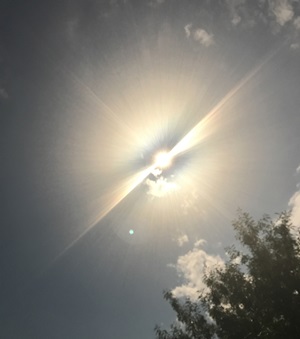 Eclipse viewing along the path of totality was a WoW moment. All the sideshows were there: pinhole crescent projections through the foliage during partial eclipse, shadow bands racing across the landscape (parking lot for us) immediately before and after totality, and the spectacular appearance of the corona during totality.
Eclipse viewing along the path of totality was a WoW moment. All the sideshows were there: pinhole crescent projections through the foliage during partial eclipse, shadow bands racing across the landscape (parking lot for us) immediately before and after totality, and the spectacular appearance of the corona during totality.
The photo was taken with my iPhone 7 a few seconds after totality, just as sunlight was appearing in the upper right quadrant with the moon sliding downward and to the left in an easterly direction. I was very lucky on timing.
The blue dot in the lower left quadrant is apparent in three live-mode burst photos and has three possible explanations:
(1) It is the planet Mercury with an enlarged image because of saturation of the photo detectors in the camera. Interestingly, the position is in good qualitative agreement with star/planetary charts for the same time. Venus, seen with the naked eye during totality, was outside of the upper right quadrant west of the sun, where it should have been.
(2) It is the heretofore unseen planet Vulcan, one of those fake news interpretations which seem to be popular these days .
(3) It is a camera lens artifact.
Arthur F. Hebard
Distinguished Professor of Physics
University of Florida
4. We Drove 700 Miles
My wife, Marlene Bloom, and I drove to Madisonville, Tennessee, to watch the eclipse. We located a high school there and settled down on a piece of unobstructed grass on the school grounds and watched as the Moon slowly completely covered the Sun. We were essentially alone, as another couple did the same thing 100 yards away from our chosen site.
It was truly "unearthly." At the moment of totality, the lighting was spectacularly surreal; the vision of a black sun surrounded by a bright, irregular halo of fire hovering motionless above us was so foreign to anything I had ever experienced that I am still processing the information of those two minutes. We had traveled some 700 miles, from Fort Lee, New Jersey, to Madisonville to see it. We now want to do the same thing again in 2024!
Dickson Despommier
Emeritus Professor of Public and Environmental Health
Columbia University
5. I First Saw Crescent Sun Pictures During the 1970 Eclipse. I Wanted to See Them Again.
Alistair Fraser, who is retired from the meteorology department at Pennsylvania State University and now lives in British Columbia, Canada, was on the hunt for the special way the Sun projected through trees during the eclipse. He writes on his blog, Exploring Kootenay Lake:
“The first hint I had that the Sun could paint pictures on the ground came from a book I read as a student. M. Minnaert’s book, Light and Colour in the Open Air, told of the way the gaps between tree leaves behave as pinhole cameras and projected images of the Sun on the ground. Normally when projected on a horizontal surface, these images would be elliptical. However, during a partial solar eclipse, they match the appearance of the Sun and become crescents.
I first saw these crescent Sun pictures during the solar eclipse of 1970. I wanted to see them again.”
See his pictures on his blog.
6. My First Solar Eclipse
Larry E. Erickson, professor of chemical engineering and director of the Center for Hazardous Substance Research at Kansas State University, wrote:
"My wife and I traveled to Pleasanton, Nebraska, to view the solar eclipse with several others who came to the same public park in Pleasanton. We had a good view of the Sun from the time when the Moon began to cover the Sun until the total eclipse could be seen. It was a great experience, and my first time to view a total solar eclipse."
7. I Was an Unexpected “Radio Star”
As a PhD physicist who has been writing children's science books full-time since 1996, I sometimes get unique opportunities.
When I saw that Nashville was in the path, I contacted Janet Ivey (the Janet of the syndicated PBS show Janet's Planet) and asked if she could find me a "gig." She arranged for me to have a booth on the weekend immediately before the eclipse at the Music City Eclipse Festival and helped me arrange to be the emcee at the community event in White House, Tennessee, right on the center line of totality.
It turned out (to my surprise) that I was given a platform on a local radio station (WQKR, Portland, Tennessee) from noon, about a minute after first contact, to 2:00 p.m., with totality just before 1:30 p.m.
Besides explaining the basics, I shared eclipse lore, including the 1919 eclipse that made Einstein famous and the opening of Mark Twain's A Connecticut Yankee in King Arthur's Court, in which the protagonist escapes execution by knowing that a total solar eclipse was about to happen.
About 15 minutes before totality, I discussed famous stellar occultations, including the discovery of Uranus' rings and last month's three occultations by 2014 MU69, the Kuiper Belt object that is the next target for the New Horizons spacecraft.
The key to being an unexpected "radio star" was to describe the experience, noting my personal experience with full excitement showing.
Some of the highlights, besides the obvious events at and near totality, were the unusually sharp shadows cast by a thin crescent sun, the crescent images on the ground through tree leaves and a colander, the odd colors as dusk fell in all directions at once, and the sound of a few thousand people cheering and gasping as the corona appeared and as the first beam of light signaled the end of totality.
The community of White House also invited me to present a similar talk to parents and kids at one of their elementary schools. What a pleasure that turned out to be, and I even sold a few more books than I had anticipated.
Alfred B. (“Dr. Fred) Bortz
8. I Built a Computer Interfaced Sensor Module
Dev Gualtieri, the president of Tikalon LLC in Ledgewood, New Jersey, was not near totality but he did make some scientific measurements, as outlined in his blog post.
He writes,
“Instead of photography, I decided to make photometric and temperature observations at my cloudy location.”
9. Sharing Eclipse Cookies on the Way to Charleston, South Carolina
Sigma Xi members and members of the public rode a bus from Sigma Xi headquarters in Research Triangle Park, North Carolina, to Charleston, South Carolina, to watch the total solar eclipse.
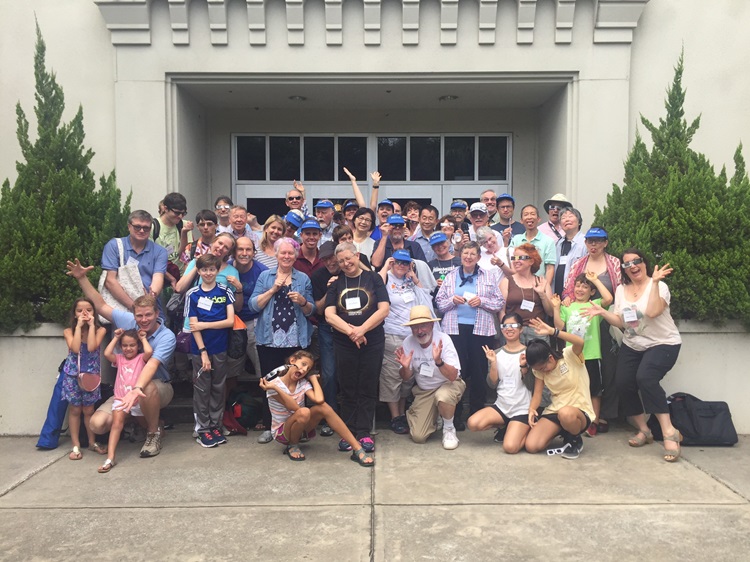
A young bus rider shares eclipse cookies.

Bus rider Alisa Leung captured the solar eclipse on her camera.
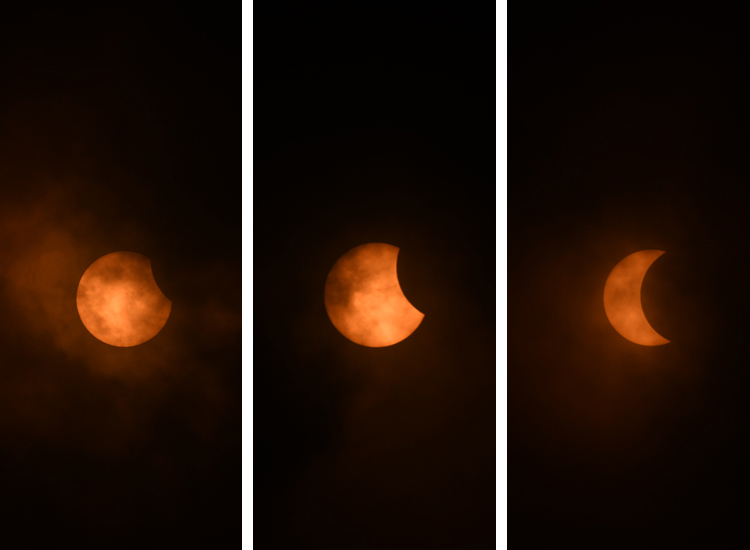
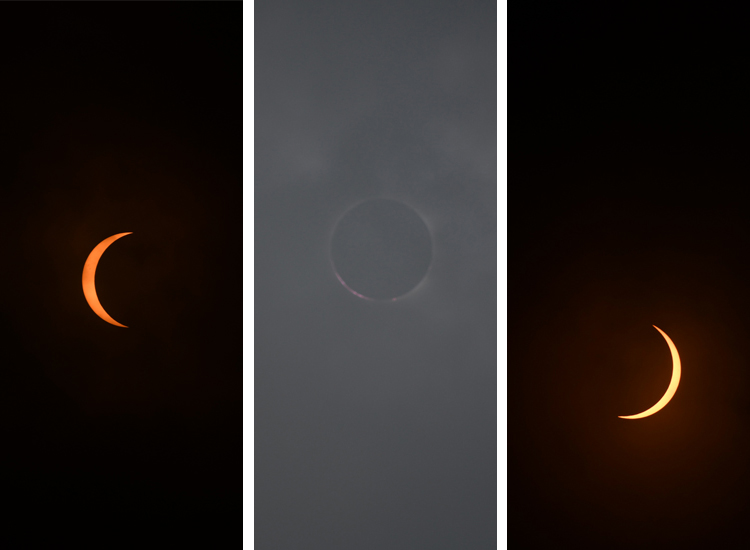
Watch the video as darkness falls during totality in Charleston.
10. Totality in Oregon: The Corona Looked Like an Artist Drybrushed it Across the Moon
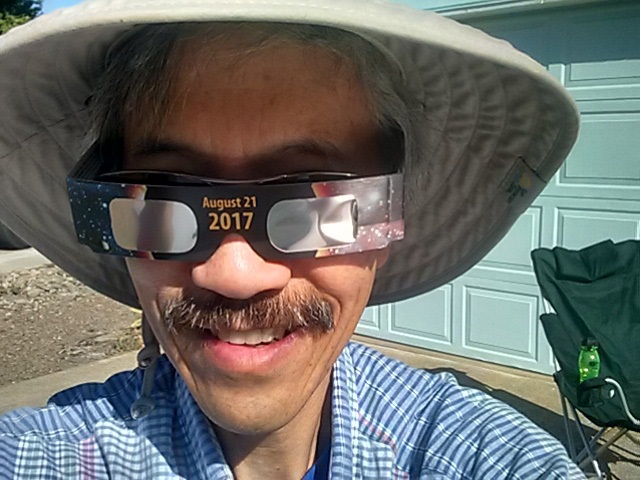
Corvallis, Oregon, had the good fortune of being in the path of totality for the 2017 solar eclipse. Because the eye adapts, the dimming wasn't obvious until about 3/4ths of the sun was covered. At that point, the dimming appeared more like a flattening of contrast, similar to when I'm running a fever.
The last bit of coverage into totality occurs fairly rapidly. Dim shimmering waves of light ran across the top of my old car in the driveway right before totality. These waves were harder to see on the ground but were remarkable on the car roof.
The general color spectrum moved from typical sunlight yellow to a deep dark blue running from black overhead to twilight on the horizon during the totality. It was darker and cooler. The streetlights came on but did not detract from viewing the eclipse. I saw no other stars or planet unlike night time when the summer sky can be filled with them.
The white corona flared out from the circumference of the moon. It was larger than I expected and not of uniform size. The shape was more like an artist had drybrushed it across the moon. There were a couple reddish orange spots beaming from the circumference.
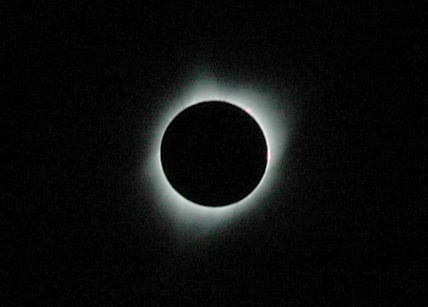
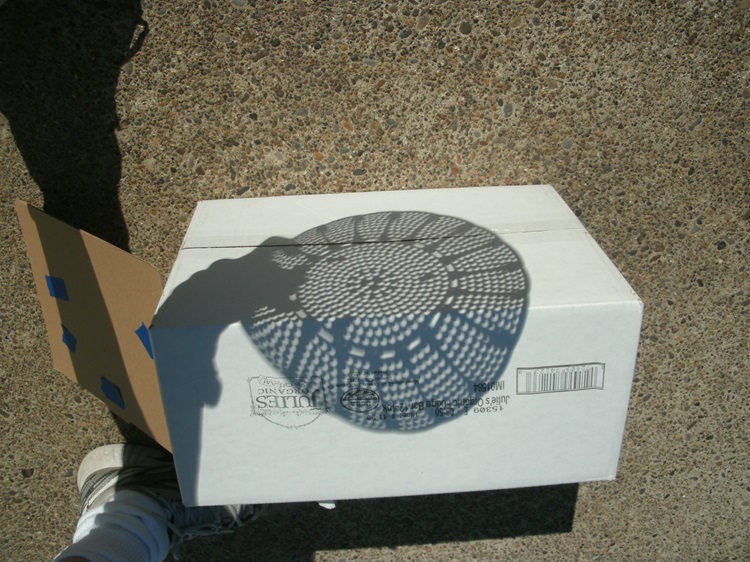
When the totality first occurred, the neighbors on my street and the next street over gave collective exclamations. Birds were quiet including my across-the-street-neighbor's chickens which aren't often heard anyway.
One minute and forty seconds of totality goes by incredibly quickly. Its end is abruptly announced by a brilliant, very white light that shines out from above, as if someone turned on a powerful LED lamp. Brightening is rapid and the streetlights turn off. Color spectrum returns to normal as if one is waking up, although contrast still looks somewhat flat.
Within a couple more minutes, the warmth of the sun is back on.
I'm looking forward to the annular solar eclipse around Eugene, Oregon, in October 2023!
I set my Moto X smartphone on the roof of the car in my driveway and let it record nearly 6 minutes of my street entering, during, and exiting the totality. Right before totality, there are waves of light sweeping across the car roof, which I've never seen in a partial eclipse.
The orange blob that appears on the roof is the reflection of the streetlight turning on. It is later replaced by a bright white blob which is the emergence of the sun. While the sky still is dark at the end of the video, the bright white light emanating from the small arc of sun is very intense as seen on the driveway and my shirt in the last few seconds.
My unedited .mp4 video is currently available.
Brian C. Lee
Corvallis, Oregon
11. The Eclipse in Washington, DC
Amy Dawson, principal at d'nitiatives and a development consultant for Sigma Xi, was driving to a meeting during the peak of the solar eclipse, and snapped some pictures with her NASA Pinhole Projector in the shape of Washington, DC.
"It was amazing to also see the front steps and other outdoor gathering places in DC crowded with people standing outside with their glasses on: the U.S. Captiol, the National Archives, the various federal buildings (and law firms...), plus neighborhood corners. A wonderful moment of awe, inspiration, and community," she wrote.
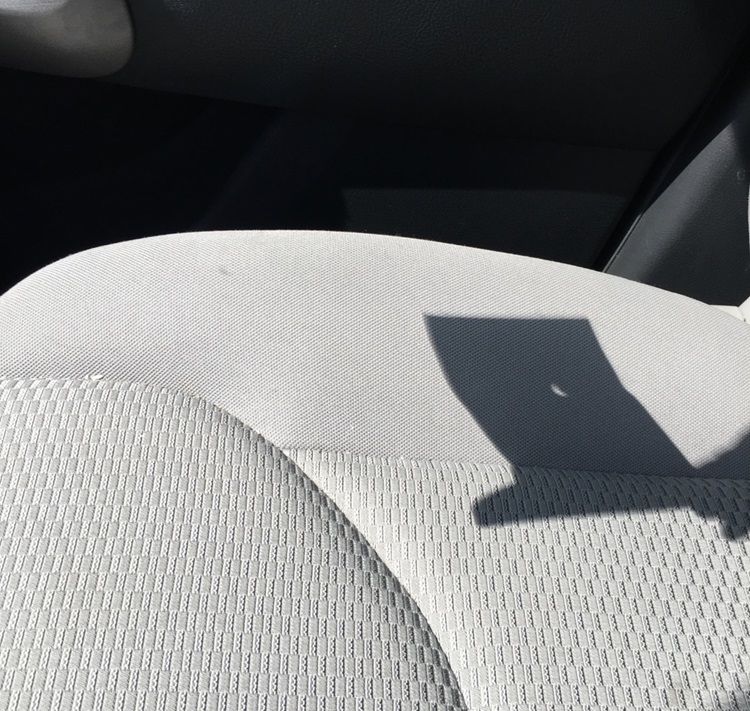
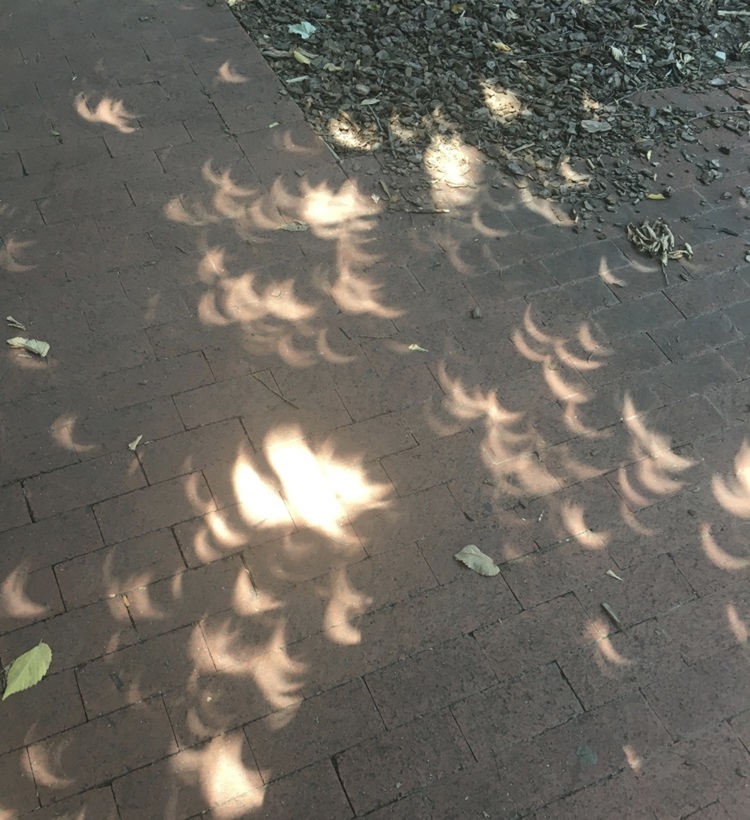
12. Amazon Recalled My Eclipse Glasses
My eclipse adventure started on the Friday morning preceding with a phone call from an elementary school librarian in adjacent Limestone County. She asked me if I could answer eclipse questions posed by first, second, and third grade students. Those questions were offered up in a series of teleconferences—one per grade—with students assembled in her library. The questions were quite good, better than those I got from local adults, at least modally.
The next bit of adventure was a recall notice from Amazon for my eclipse glasses. I soon discovered there were none to be bought locally, so I spent the weekend re-planning my Monday activities. I have seen several eclipses starting with my days as a graduate student, so I had no great expectation of novelty and asked myself what I had not seen. After some reflection, I realized that in all of those eclipses my attention had been devoted to watching the eclipse proper.
In my early career, I did quite a bit of work on atmospheric optics and I realized that I had never watched the sky light during an eclipse. So, on Monday, I sat and watched the sky light during the eclipse. My location was at about 96% totality so the sky never completely "blackened," and I could watch the sky colors throughout. And the process of comprehending all the scattering flux will continue the adventure for some time.
Bruce W. Fowler
Arab, Alabama
Posts have been edited for length and style.